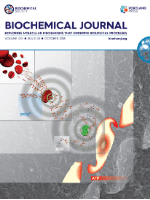
MOLECULES AND CELLS
Scope & Guideline
Exploring the Interplay of Molecules and Cells
Introduction
Aims and Scopes
- Molecular Mechanisms in Biology:
The journal frequently publishes articles that delve into the molecular underpinnings of various biological processes, including gene regulation, signal transduction, and metabolic pathways. - Cellular Dynamics and Functions:
Research focusing on cellular behaviors, including differentiation, migration, and apoptosis, is a core area of interest, contributing to our understanding of cellular responses in health and disease. - Genomic and Epigenomic Studies:
The journal highlights studies involving genomics, transcriptomics, and epigenetics, emphasizing how these layers of regulation impact cellular function and organismal development. - Innovative Experimental Techniques:
There is a consistent focus on novel methodologies, including single-cell analysis, CRISPR technologies, and advanced imaging techniques, which enhance the ability to study complex biological systems. - Interdisciplinary Approaches:
The journal encourages contributions that integrate various fields such as biochemistry, bioinformatics, and systems biology, reflecting the complexity of biological research today.
Trending and Emerging
- Single-Cell Technologies:
The rise of single-cell RNA sequencing and related technologies is a prominent trend, enabling researchers to explore cellular heterogeneity and gene expression at unprecedented resolution. - Cancer Biology and Therapeutics:
A significant number of recent publications focus on cancer biology, particularly mechanisms of tumorigenesis and novel therapeutic strategies, reflecting the ongoing battle against cancer. - Neurobiology and Neurological Disorders:
There is an increasing emphasis on studies related to neurobiology, including mechanisms of neurodegenerative diseases and neural circuit functions, highlighting the need for understanding brain health. - Environmental and Stress Responses:
Research investigating how cells respond to environmental stressors, including pollutants and climate change, is gaining traction, reflecting a growing awareness of the impact of external factors on biological systems. - Metabolic Regulation and Disease:
Emerging themes in metabolic research, particularly relating to obesity, diabetes, and metabolic syndrome, are becoming more prevalent as the links between metabolism and various diseases are better understood.
Declining or Waning
- Classical Genetics and Mendelian Studies:
Research that primarily focuses on classical genetics and Mendelian inheritance patterns has seen a decrease, likely due to the shift towards more complex genomic studies and molecular genetics. - Basic Cell Culture Techniques:
Papers detailing basic cell culture methodologies are less frequent, as the field has advanced towards more sophisticated and innovative experimental designs that incorporate live-cell imaging and multi-cellular systems. - Isolation of Individual Biomolecules:
Traditional studies centered around the isolation and characterization of single biomolecules are becoming less common, with a trend towards understanding biomolecular interactions and networks in a cellular context. - Descriptive Studies without Mechanistic Insights:
There is a noticeable decline in publications that offer merely descriptive findings without mechanistic insights, as the journal increasingly favors studies that elucidate underlying biological mechanisms.
Similar Journals

Journal of Biochemistry
Where groundbreaking biochemistry research comes to life.Journal of Biochemistry, published by Oxford University Press, is a prestigious academic journal that has been at the forefront of biochemical research since its inception in 1922. With an ISSN of 0021-924X and an E-ISSN of 1756-2651, this journal serves as a platform for disseminating high-quality research in the fields of biochemistry, molecular biology, and medicine, holding impressive rankings such as Q2 in Biochemistry and Medicine (miscellaneous) in 2023. As of 2024, the journal continues to explore significant topics in these areas, offering valuable insights for researchers, professionals, and students alike. The journal does not currently offer open access, but it remains a vital resource for anyone in the biochemical community seeking to stay updated on the latest discoveries and advancements. With its rich history and dedication to scientific excellence, the Journal of Biochemistry is an indispensable part of the scholarly landscape.

FOLIA BIOLOGICA
Elevating Biological Research Through Peer ReviewFOLIA BIOLOGICA, published by Charles University Prague, First Faculty of Medicine, is an esteemed academic journal that has been contributing to the fields of Biochemistry, Cell Biology, Developmental Biology, Genetics, Immunology, and Molecular Biology since its inception in 1961. With an ISSN of 0015-5500, this journal serves as a vital platform for researchers and professionals to disseminate their findings and advance knowledge within these disciplines. Despite its current Category Quartiles ranking in the lower tiers (Q3 and Q4), FOLIA BIOLOGICA continues to provide valued insights and foster scholarly dialogue, particularly in its paralleled fields. The journal is headquartered in Prague, Czech Republic, and operates without Open Access options, which emphasizes its focus on curated, peer-reviewed content essential for academicians and students. By bridging theoretical and practical knowledge, FOLIA BIOLOGICA remains committed to enriching the scientific community and serving as a cornerstone for future research innovations.

Cell Discovery
Empowering Open Access to Cutting-Edge ResearchCell Discovery, published by SPRINGERNATURE, is a premier open access journal in the dynamic fields of Biochemistry, Cell Biology, Genetics, and Molecular Biology. Since its inception in 2015, this journal has established itself as a key platform for disseminating high-impact research and is recognized with a Q1 ranking across all its core categories for the year 2023. With its remarkable Scopus rankings—7th in Genetics, 9th in Biochemistry, 13th in Molecular Biology, and 15th in Cell Biology—Cell Discovery positions itself among the elite journals in life sciences, showcasing the most innovative breakthroughs and comprehensive reviews. Based in the United Kingdom, this journal operates under an open access model, ensuring that groundbreaking discoveries are readily available to researchers, professionals, and students around the globe. With a commitment to advancing scientific knowledge, Cell Discovery welcomes contributions that push the frontiers of our understanding in cellular and genetic sciences.

BIOLOGY OF THE CELL
Elevating the standards of cellular research and publication.BIOLOGY OF THE CELL is a prominent academic journal published by Wiley, dedicated to advancing the field of cellular biology through the dissemination of innovative research and insights. With its ISSN (0248-4900) and E-ISSN (1768-322X), this journal has been a vital resource since its inception in 1981 and is set to continue its scholarly contributions until 2024. Positioned within the Q3 quartile in Cell Biology and Q2 in Medicine (miscellaneous) as of 2023, BIOLOGY OF THE CELL is recognized for its rigorous peer-review process and its commitment to high-quality publication in critical areas such as biochemistry, genetics, and molecular biology. Although the journal does not currently offer open access options, it remains accessible through the Wiley platform, ensuring that researchers, professionals, and students can benefit from its rich repository of knowledge. By linking fundamental cellular processes with broader medical implications, this journal serves as a critical platform for fostering dialogue and innovation in cellular research, making it an essential read for anyone engaged in the life sciences.

INTERNATIONAL JOURNAL OF BIOCHEMISTRY & CELL BIOLOGY
Shaping the Future of Biochemistry and Cell BiologyThe International Journal of Biochemistry & Cell Biology, published by Pergamon-Elsevier Science Ltd, stands as a pivotal resource in the fields of biochemistry and cell biology. With an ISSN of 1357-2725 and an E-ISSN of 1878-5875, this prestigious journal has been a key platform for disseminating cutting-edge research since its inception in 1995. The journal currently holds an impressive Q1 ranking in Biochemistry and a Q2 ranking in Cell Biology for the year 2023, reflecting its commitment to high-quality research and its influence within the scientific community. With a significant Scopus ranking of 94/438 in Biochemistry and 96/285 in Cell Biology, the journal plays a crucial role in advancing knowledge and fostering innovative approaches in these dynamic fields. Though it is not an open-access journal, the International Journal of Biochemistry & Cell Biology remains accessible to a wide audience, making it a vital resource for researchers, professionals, and students alike, who are eager to explore and contribute to the ongoing advancements in biochemistry and cell biology.

BIOCHEMICAL AND BIOPHYSICAL RESEARCH COMMUNICATIONS
Exploring the molecular mechanisms that shape our world.BIOCHEMICAL AND BIOPHYSICAL RESEARCH COMMUNICATIONS, published by Academic Press Inc Elsevier Science, stands as a leading periodical in the fields of biochemistry, biophysics, cell biology, and molecular biology. With an ISSN of 0006-291X and an E-ISSN of 1090-2104, this esteemed journal has been a pivotal platform for the dissemination of groundbreaking research since its inception in 1959, continuing to publish influential findings through at least 2024. It holds a commendable Q2 ranking in Biochemistry and Q1 status in Biophysics as of 2023, reflecting its high impact and relevance in the field, supported by its strong Scopus rankings—ranking #43 in Biophysics and maintaining a presence in the top quartiles of several related categories. Although it is not an open-access journal, it provides critical insights and essential data that cater to researchers, professionals, and students keen on advancing their understanding of complex biochemical and biophysical processes. Its significant contributions to the scientific community underscore the importance of this journal as a reference point for innovative research and collaborative discourse.

CURRENT OPINION IN CELL BIOLOGY
Illuminating Trends in Cell ResearchCURRENT OPINION IN CELL BIOLOGY, published by CURRENT BIOLOGY LTD, serves as a vital resource for scholars and professionals in the dynamic field of cell biology. With a solid Q1 ranking and impressive Scopus ranking of #33 out of 285 in the category of Cell Biology, this journal is recognized for its high impact and relevance among its peers, boasting an excellent percentile ranking of 88th. Established in 1989, it provides insightful reviews and perspectives that capture the latest developments and emergent trends in cellular research, making it indispensable for those aiming to deepen their understanding of cellular mechanisms and innovations. While the journal does not offer open access, its carefully curated content ensures that subscribers receive top-tier scholarly discourse. Situated in the heart of the United Kingdom, CURRENT OPINION IN CELL BIOLOGY continues to shape the conversation in a field that is critical to advancements in biochemistry, genetics, and molecular biology.

Biology Direct
Exploring the vast landscape of life sciences research.Biology Direct is a leading open-access journal published by BMC, dedicated to disseminating groundbreaking research in the fields of biological sciences. Since its inception in 2006, the journal has emerged as a pivotal platform for scholars, researchers, and practitioners, providing unrestricted access to high-quality, peer-reviewed articles that cover a wide spectrum of topics, including biochemistry, ecology, and applied mathematics. With an impressive ranking in the first quartile across multiple scientific categories, including Agricultural and Biological Sciences and Biochemistry, Genetics, and Molecular Biology, Biology Direct is recognized for its rigorous standards and impactful contributions within the academic community. The journal's open-access model ensures that research findings reach a global audience, fostering collaboration and innovation. Researchers and students looking to stay ahead in the rapidly evolving biological sciences will find Biology Direct an invaluable resource for knowledge and insight.

MOLECULAR AND CELLULAR BIOCHEMISTRY
Connecting Molecular Insights to Clinical ApplicationsMOLECULAR AND CELLULAR BIOCHEMISTRY, an esteemed journal published by SPRINGER, serves as a prominent platform in the fields of biochemistry and molecular biology. With a history of dissemination since 1973, this journal has made significant contributions to the understanding of biochemical processes at the molecular level. The MOLECULAR AND CELLULAR BIOCHEMISTRY journal focuses on a myriad of topics including but not limited to cellular biochemistry, clinical biochemistry, and interdisciplinary approaches in medicine, boasting a commendable categorization in the 2023 Scopus ranks where it falls under Q3 in Cell Biology, Q2 in Clinical Biochemistry, Q1 in Medicine (miscellaneous), and Q2 in Molecular Biology. Although the journal is not open access, it provides access options through institutional subscriptions, making valuable research accessible to a wider audience. With its rigorous peer-review process and high impact within the scientific community, this journal aims to advance knowledge and stimulate exploration in biochemical research, making it essential reading for researchers, professionals, and students alike.

BIOCHEMICAL JOURNAL
Connecting Ideas, Inspiring Discoveries in BiochemistryBIOCHEMICAL JOURNAL, published by Portland Press Ltd, stands as a leading publication in the fields of Biochemistry, Cell Biology, and Molecular Biology, reflecting a commitment to advancing scientific knowledge since its inception in 1945. With a distinguished Q1 ranking across these categories and impressive Scopus rankings, the journal serves as an invaluable resource for researchers, professionals, and students alike, facilitating critical discoveries and innovative research practices. Although not currently offering open access, the journal provides a platform for high-quality peer-reviewed articles, ensuring rigorous standards in the dissemination of biochemical research. Spanning over seven decades and continuing through to 2024, the BIOCHEMICAL JOURNAL fosters an environment where cutting-edge biochemical research thrives, supporting the global scientific community's efforts to address complex biological questions and enhance our understanding of fundamental cellular processes.